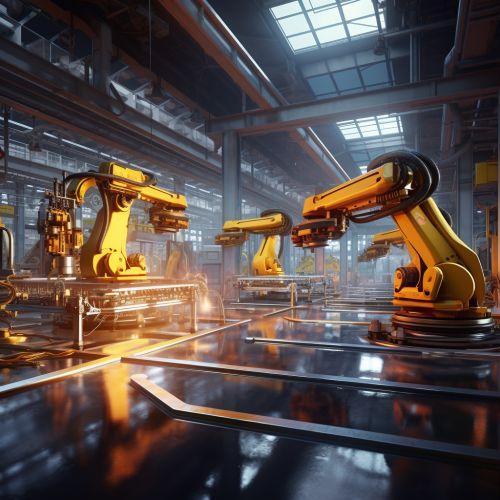Machine Learning in Manufacturing
Introduction
Machine learning, a subset of artificial intelligence, has been increasingly applied in the manufacturing industry. It involves the use of algorithms and statistical models to perform tasks without explicit instructions, relying on patterns and inference instead. In manufacturing, machine learning can enhance productivity, improve efficiency, and reduce costs.
Machine Learning Concepts in Manufacturing
Machine learning in manufacturing involves several key concepts, including supervised learning, unsupervised learning, reinforcement learning, and deep learning.
Supervised Learning
Supervised learning is a type of machine learning where an algorithm learns from labeled training data, and makes predictions based on that data. In manufacturing, supervised learning can be used for predictive maintenance, quality control, and demand forecasting.
Unsupervised Learning
Unsupervised learning is a type of machine learning that finds patterns in data without the need for labels. In manufacturing, unsupervised learning can be used for anomaly detection, process optimization, and inventory management.
Reinforcement Learning
Reinforcement learning is a type of machine learning where an agent learns to make decisions by taking actions in an environment to maximize a reward. In manufacturing, reinforcement learning can be used for dynamic pricing, supply chain optimization, and robotic process automation.
Deep Learning
Deep learning is a subset of machine learning that uses artificial neural networks with many layers. In manufacturing, deep learning can be used for image recognition, natural language processing, and predictive analytics.
Applications of Machine Learning in Manufacturing
Machine learning has a wide range of applications in the manufacturing industry. These include predictive maintenance, quality control, demand forecasting, supply chain optimization, and more.
Predictive Maintenance
Predictive maintenance involves using machine learning algorithms to predict when a machine or equipment is likely to fail. This allows manufacturers to schedule maintenance in advance, reducing downtime and increasing productivity.
Quality Control
Machine learning can also be used for quality control in manufacturing. Algorithms can be trained to detect defects in products, helping to ensure that only high-quality items are shipped to customers.
Demand Forecasting
Demand forecasting involves predicting future demand for a product. Machine learning algorithms can analyze historical sales data and other factors to make accurate predictions, helping manufacturers to plan production and manage inventory.
Supply Chain Optimization
Machine learning can also be used to optimize the supply chain. Algorithms can analyze data from various sources to identify inefficiencies and suggest improvements, helping to reduce costs and improve delivery times.


Challenges and Limitations of Machine Learning in Manufacturing
While machine learning offers many benefits for the manufacturing industry, it also presents several challenges and limitations. These include the need for large amounts of data, the risk of overfitting, the difficulty of interpreting complex models, and the potential for bias in algorithms.
Data Requirements
Machine learning algorithms require large amounts of data to train effectively. In some cases, manufacturers may not have access to sufficient data, limiting the effectiveness of machine learning applications.
Overfitting
Overfitting is a common problem in machine learning, where a model learns the training data too well and performs poorly on new data. This can lead to inaccurate predictions and poor performance in real-world applications.
Interpretability
Many machine learning models, particularly deep learning models, are complex and difficult to interpret. This can make it challenging to understand why a model is making certain predictions, which can be problematic in industries where transparency and explainability are important.
Bias
Machine learning algorithms can also be biased, based on the data they are trained on. If the training data is biased, the resulting model will also be biased, which can lead to unfair or discriminatory outcomes.
Future Directions
Despite these challenges, the future of machine learning in manufacturing looks promising. Advances in technology are making it easier to collect and analyze data, and improvements in algorithms are making machine learning more effective and efficient. As a result, the use of machine learning in manufacturing is likely to continue to grow in the coming years.
See Also
- Artificial Intelligence in Industry
- Predictive Analytics
- Robotics in Manufacturing
- Data Science in Industry
